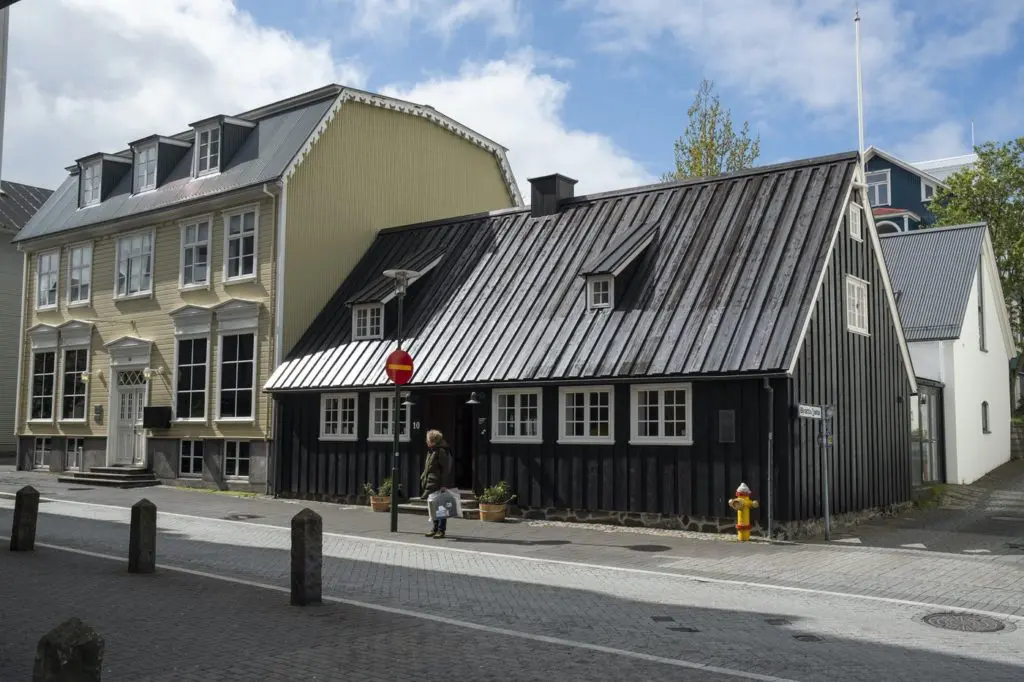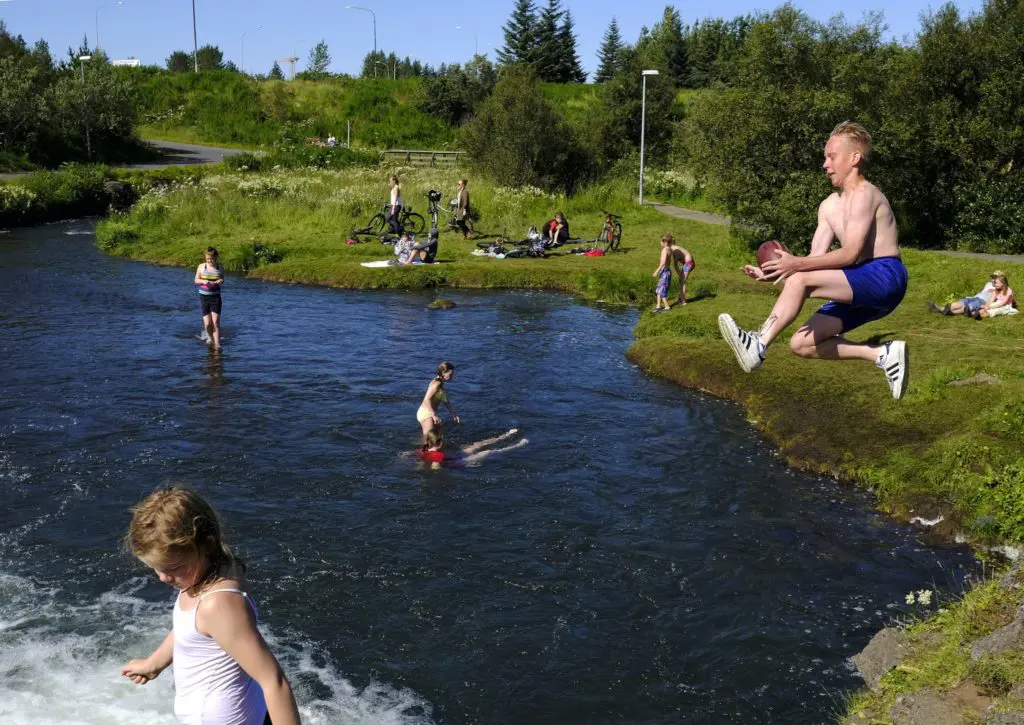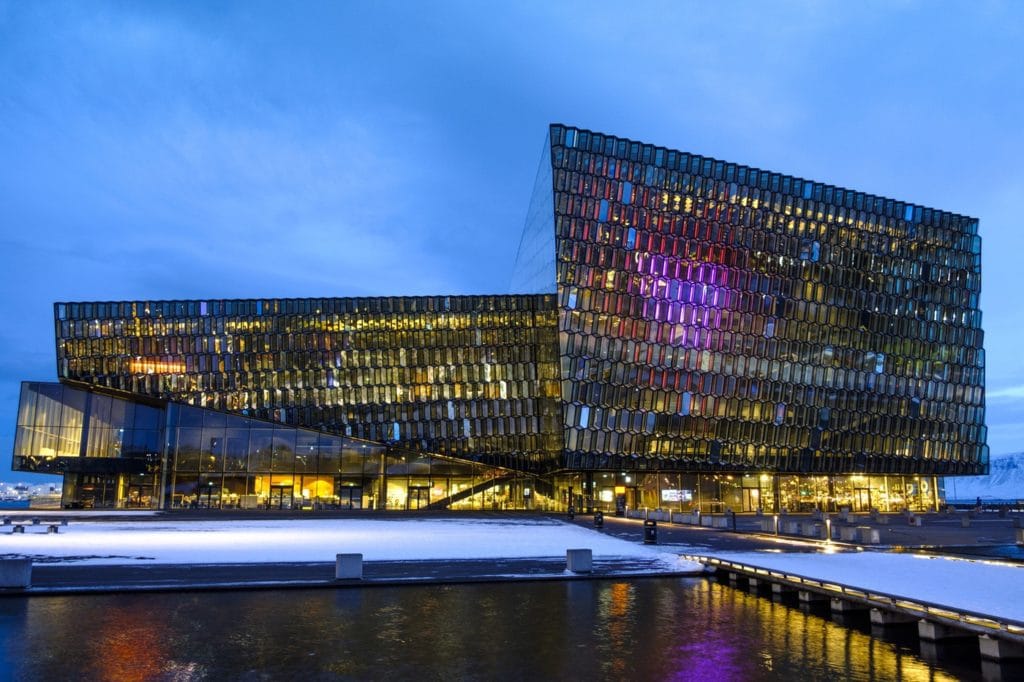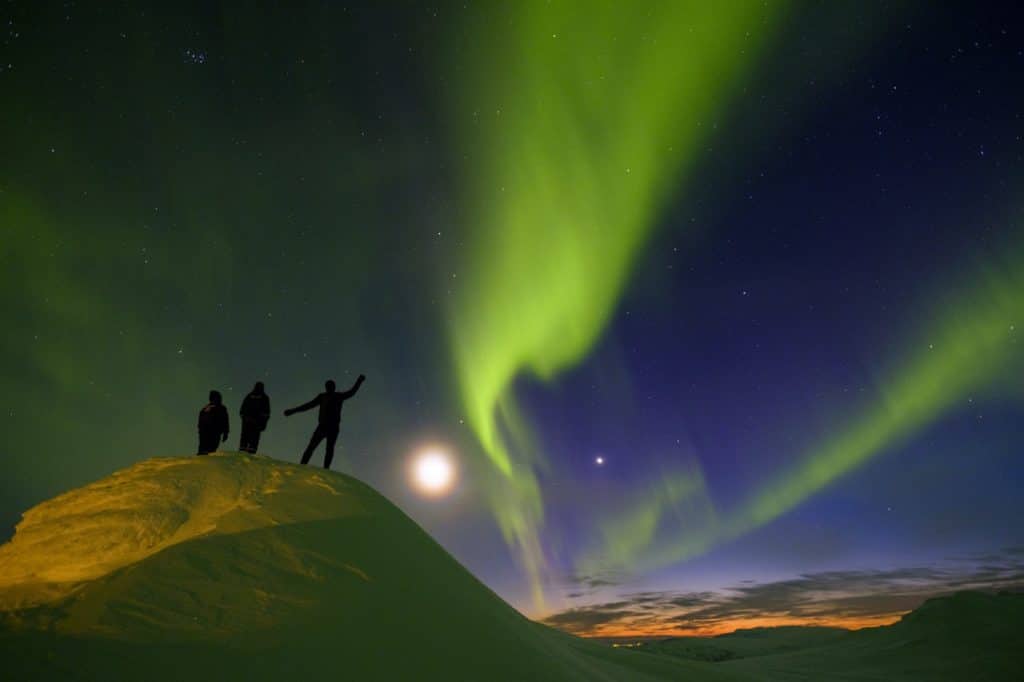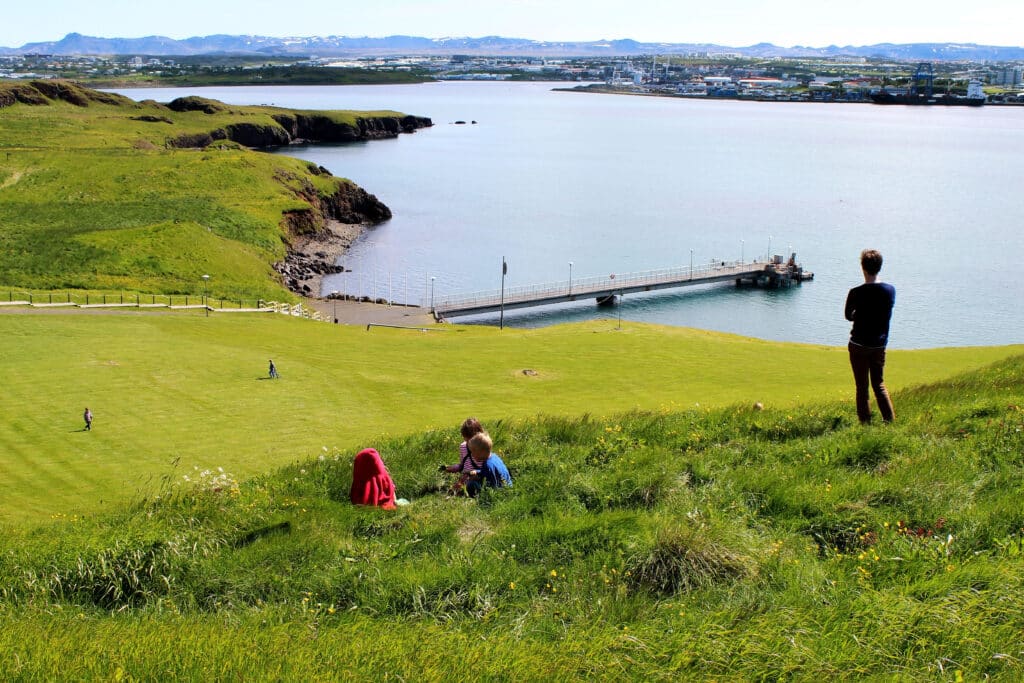1 | Reykjavík’s oldest street
Excavations on Aðalstræti street have revealed ruins dating back to the age of settlement. In 1752, the enterprising constable Skúli Magnússon, sometimes called the father of Reykjavík, decided it should be a site for various factory workshops called the Innréttingar, which eventually grew into the core of what we now call downtown Reykjavík.
2 | The oldest timber building
Aðalstræti 10 is considered the city’s oldest timber house. In olden times, it was the residence of Bishop Geir Vídalín (1761-1823), whose hospitality was infamous. He was so generous that he went bankrupt and a committee had to be formed to control his finances. Today, Aðalstræti 10 houses exhibitions on the history of Reykjavík.
3 | The Falcon House
On the corner of Hafnarstræti and Aðalstræti, you’ll find the Falcon House. Icelandic falcons (Falco Rusticolus) were kept in a house on this site before being shipped to buyers overseas, namely European aristocracy. Statues of falcons adorn the house to this day, reminding us of its former role.
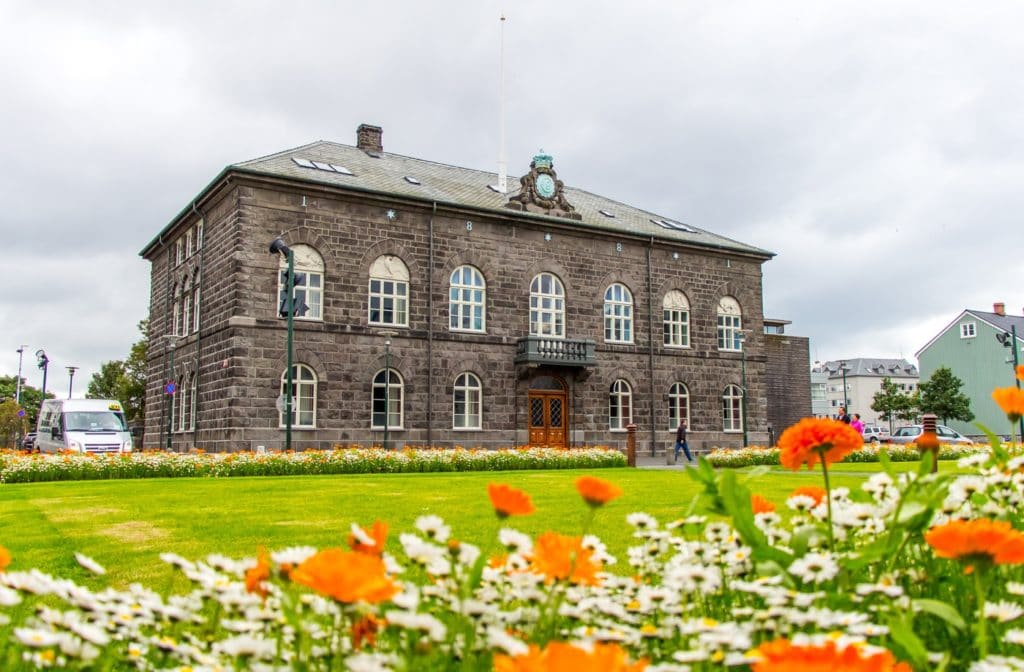
4 | The House of Parliament
Iceland’s Alþingi is the world’s oldest still functioning Parliament. Founded in 930 AD, it predates Great Britain’s Parliament by 777 years, the US Congress by 851 years and Russia’s Duma by 976 years. Despite this, Iceland’s House of Parliament was only built in 1881 and until 1799, the Alþingi assembled outdoors at Þingvellir National Park.
5 | Austurvöllur
The green square in front of the House of Parliament is in many ways the beating heart of the city. It’s a meeting place for the people of Reykjavík, no matter if the occasion is a happy one or more contentious. People will flock to the square to sit in the sun on a summer’s day and in winter, it’s the location of the city’s biggest Christmas tree. During times of political struggle, it’s also where people gather to voice their discontent with the rulers of the land.
6 | City Hall
By city pond Tjörnin stands Reykjavík City Hall, a palace of glass and concrete built in 1993. The building is the result of an architectural competition and it masterfully connects the pond with the man-made buildings on its banks. The building houses offices including the mayor’s office and an exhibition hall.
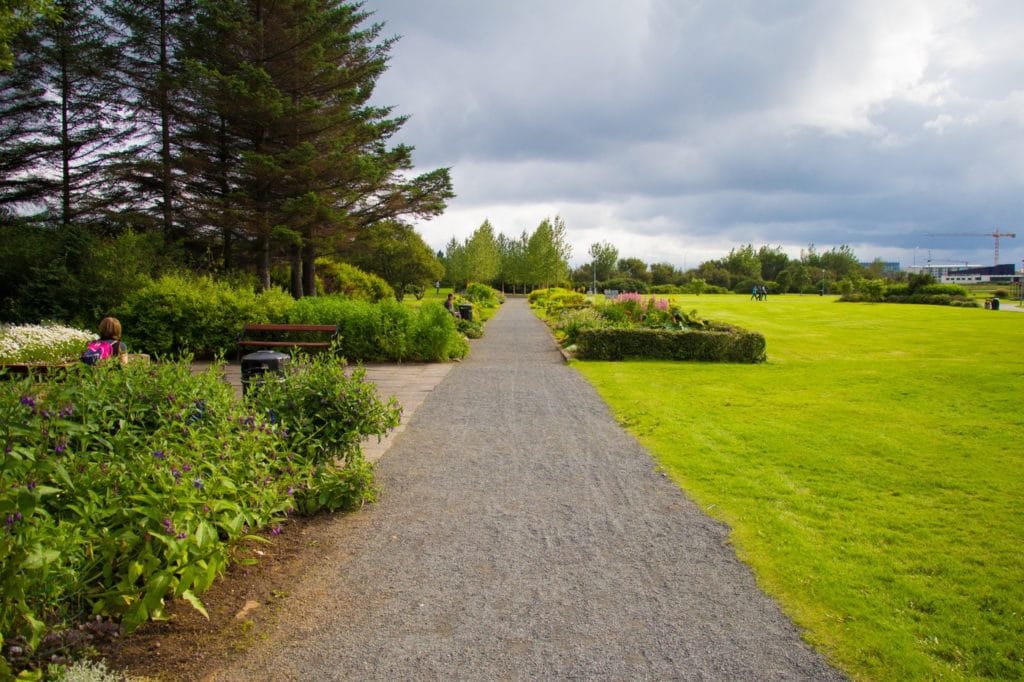
7 | Hljómskálinn
The park around the city pond is named after an octagonal towerlike structure, built to house the Reykjavík brass band. Hljómskálinn was the first building in Iceland purposely built for musicians, although it was only intended for practices, not concerts. Even though Hljómskálinn looks like a modest building today, it was controversial at the time it was built and many considered it way too tall and a blight on an otherwise beautiful park.
8 | The National Gallery
The main building of The National Gallery was built in 1916 as an icehouse. Before modern refrigeration, ice was taken from the pond and kept in icehouses until it was used to keep food fresh and fish for foreign markets unspoilt. When modern refrigeration replaced the icehouses, a night club moved in and became legendary during the Beatles era of music. It burned down one night and wasn’t rebuilt because of a petition by the building’s neighbours. The National Gallery received the building in ruins, but it was rebuilt with an extension to become the stately building it is today.
9 | Ingólfsbrekka hill
Probably one of the best-preserved sections of old Reykjavík’s landscape. In 1806, it marked the eastern boundary of the city. Most of these houses were supposed to have been torn down, but a group of locals protested, and the houses were restored to their original glory.
10 | Government House
Completed in 1771, this was Iceland’s first proper prison, designed to hold 16 felons and 54 misdemeanants – serving as such until 1816. Today, it houses the Prime Minister’s Office and serves as the meeting place for the State Council consisting of Iceland’s 12 ministers. A popular joke is that while they closed the prison, the criminals still haven’t left the building.
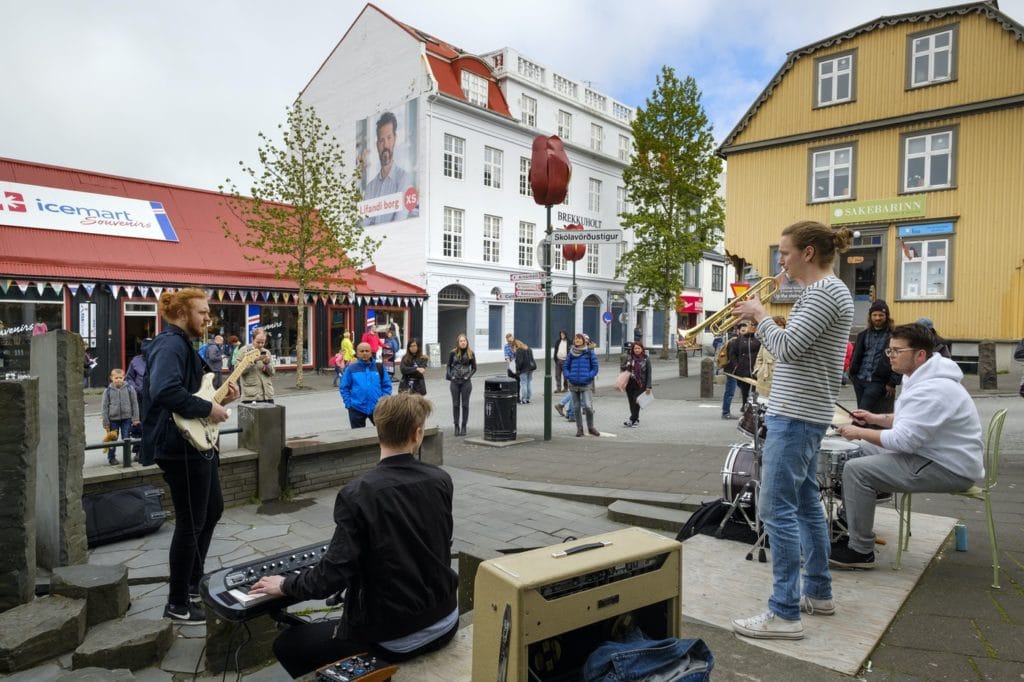
11 | Laugavegur
Now crowded with boutiques and cafés, Laugavegur (Pool Road) wasn’t always so glamorous. The street gained its name from the washerwomen who would tread through the mud carrying heavy loads of laundry to the geothermal pools in Laugardalur valley.
12 | Gossip Ledge
On the corner of Skólavörðustígur and Bergstaðastræti is a place called Gossip Ledge. In olden times, it was customary for people in Reykjavík to gather there and swap gossip. The local gossip has since moved to the city’s hot tubs, where all of Iceland’s most important discussions now take place.
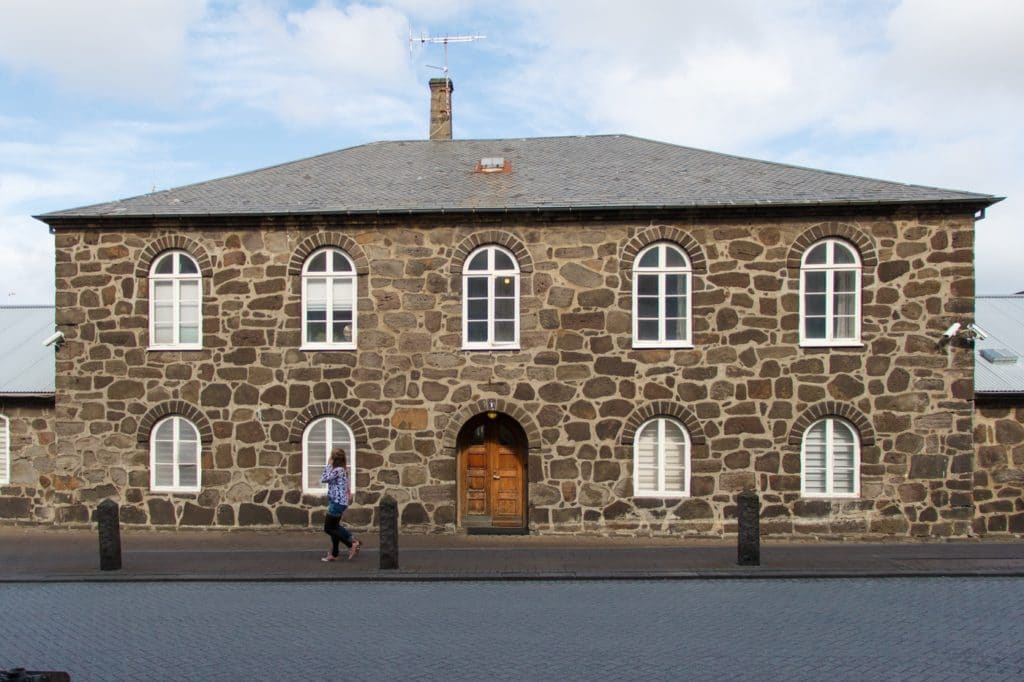
13 | The Punishment House
One of the city’s oldest buildings is the jail Hegningarhúsið (The Punishment House), built in 1874. At the time, it was considered a humane alternative to physical punishment, but by the time the 21st century rolled around, its lack of a gym and a cafeteria, among other shortcomings, rendered it outdated. It functioned as a prison until spring 2016.
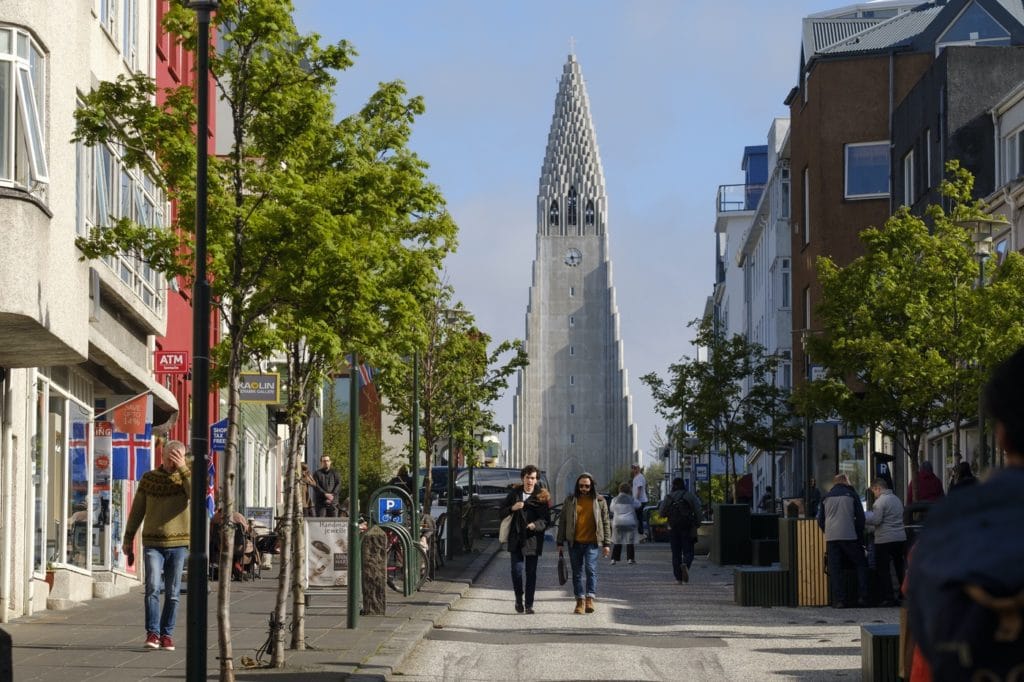
14 | Hallgrímskirkja
Hallgrímskirkja is one of the most recognisable landmarks in Reykjavík and the view from the top of the church tower is incomparable. The church was designed by Iceland’s most prolific architect during the 20th century, Guðjón Samúelsson, who was inspired by columnar basalt which can be found in Icelandic nature. The church is named after Hallgrímur Pétursson, a 17th-century minister, whose poetry is one of the most important in Icelandic literary history. He wrote an epic 50-poem hymn dedicated to the Passion of the Christ and a hymn which to this day is sung at most funerals in Iceland.

